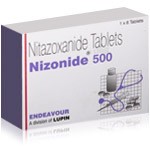Cryptosporidiosis Explained


Cryptosporidiosis is a parasitic infection that affects the intestines and can cause significant gastrointestinal distress. It has gained medical importance because of its ability to spread quickly through contaminated water, its resistance to common disinfectants, and the particular risk it poses to vulnerable groups such as children, the elderly, and immunocompromised individuals. Understanding what causes cryptosporidiosis, how long it lasts, and how it can be treated is essential for both prevention and recovery.
What is Cryptosporidiosis?
Cryptosporidiosis is an intestinal infection caused by Cryptosporidium, a microscopic protozoan parasite. Unlike bacteria or viruses, Cryptosporidium is a protozoa that reproduces inside the small intestine, leading to watery diarrhea and other gastrointestinal symptoms. The infection is spread primarily through the fecal-oral route, which means that tiny oocysts (the infectious form of the parasite) shed in the feces of an infected person or animal can contaminate food, drinking water, recreational water, or surfaces.
The disease is a major cause of waterborne outbreaks worldwide. Cryptosporidium oocysts are highly resistant to standard chlorination used in public water systems, which means swimming pools, lakes, and even municipal supplies can sometimes harbor the parasite. In developing countries with limited access to clean water and sanitation, the condition is even more widespread, affecting millions each year.
What Causes Cryptosporidiosis?
The infection is caused specifically by ingesting the oocysts of Cryptosporidium. These oocysts are hardy and can survive in harsh environmental conditions, including chlorinated water and cold temperatures. Once ingested, the oocysts travel to the small intestine, where they release sporozoites that invade the lining of the gut. This invasion damages the intestinal cells, disrupts absorption, and triggers inflammation, all of which contribute to the hallmark symptom of watery diarrhea.
People most at risk include:
- Children in daycare settings, where hygiene lapses are more common.
- Travelers to regions with poor water treatment facilities.
- Immunocompromised patients, especially those with HIV/AIDS, undergoing chemotherapy, or on immunosuppressive drugs after organ transplants.
- Individuals in close contact with livestock, since cattle and other animals can carry the parasite.
The infectious dose is extremely low; even swallowing a small number of oocysts can lead to full-blown infection. This explains why outbreaks in swimming pools or community water supplies can affect hundreds of people at once.
Symptoms and ClinicalPresentation
Cryptosporidiosis typically presents as profuse, watery diarrhea, which can be accompanied by other gastrointestinal complaints. Symptoms usually appear within 2 to 10 days (average 7 days) after exposure and may include:
- Frequent, watery stools
- Abdominal cramps
- Nausea and vomiting
- Low-grade fever
- Dehydration
- Weight loss due to poor absorption
In healthy individuals, the illness may resolve spontaneously after one to two weeks, though fatigue and intermittent symptoms can linger. In people with weakened immune systems, however, the disease can become chronic and life-threatening, leading to malnutrition, severe dehydration, and wasting.
How Long Does Cryptosporidiosis Last?
The duration of cryptosporidiosis depends on the immune status of the patient. In otherwise healthy adults and children, the infection is often self-limited, lasting from one to two weeks. Some people may continue to experience intermittent diarrhea or gastrointestinal upset for up to a month, even after the acute phase resolves.
For immunocompromised patients, the situation is far more complex. The infection can persist for months or even become chronic, with ongoing diarrhea that significantly impacts quality of life. In HIV-positive patients before the widespread availability of antiretroviral therapy, cryptosporidiosis was a common opportunistic infection and a major cause of death due to wasting and dehydration.
Therefore, while cryptosporidiosis may last just a couple of weeks in the general population, it can be a long-lasting and debilitating condition for those with weakened immune systems.
Can Cryptosporidium Be Cured?
One of the challenges of cryptosporidiosis is that there is no guaranteed cure for everyone. In healthy people, the immune system usually clears the parasite naturally, which means supportive care — rehydration, rest, and good nutrition — is often enough. However, in those with compromised immunity, spontaneous clearance may not occur, and treatment becomes more complex.
Antiparasitic medications have been developed, with nitazoxanide (marketed under the brand name Nizonide in several countries) being the most widely used. Nitazoxanide interferes with the parasite’s energy metabolism, reducing its ability to reproduce. Clinical trials have shown that it can significantly shorten the duration of diarrhea and improve recovery rates in immunocompetent patients. However, its effectiveness in immunocompromised individuals is more limited, though it may still provide symptomatic relief.
In addition to specific therapy, treatment focuses heavily on supportive care, especially oral or intravenous rehydration to replace lost fluids and electrolytes. This is critical, as dehydration remains the most dangerous complication of the infection. For HIV patients, antiretroviral therapy (ART) has dramatically reduced the burden of cryptosporidiosis by restoring immune function, making it easier for the body to control the infection.
What Color is Cryptosporidium Poop?
A question that often arises in clinical practice is how to recognize stool changes associated with cryptosporidiosis. Infected individuals typically produce large volumes of watery diarrhea. The stool is usually pale, yellow, or greenish, reflecting both the rapid transit of food through the intestines and the poor absorption of bile salts. It may sometimes appear foul-smelling or frothy due to malabsorption of fats.
Unlike bacterial dysentery, stools from cryptosporidiosis generally do not contain visible blood or pus. The watery, pale, or greenish appearance can be a clue, but laboratory testing is always needed for confirmation. Diagnosis is typically made by examining stool samples under a microscope for Cryptosporidium oocysts or using molecular techniques like PCR for higher sensitivity.
The Role of Nizonide (Nitazoxanide) in Treatment
Nizonide, which contains the active ingredient nitazoxanide, has become a cornerstone in the management of cryptosporidiosis. Nitazoxanide is a broad-spectrum antiparasitic and antiviral medication that works by inhibiting the pyruvate:ferredoxin oxidoreductase enzyme-dependent electron transfer reaction, an essential metabolic pathway for anaerobic energy production in the parasite. By disrupting energy metabolism, the drug reduces the parasite’s survival and replication.
Effectiveness in Immunocompetent Patients
In otherwise healthy individuals, Nizonide has shown excellent results. Clinical trials demonstrate that it can shorten the duration of diarrhea from about 7–14 days to just 3–7 days, allowing for faster recovery and reduced dehydration risk. It is well-tolerated, with side effects generally limited to mild gastrointestinal disturbances such as nausea or abdominal pain.
Effectiveness in Immunocompromised Patients
The effectiveness of Nizonide is more variable in immunocompromised patients. While some studies have reported improvement in symptoms, complete eradication of the parasite is often difficult without concurrent immune restoration. For HIV-positive individuals, for instance, the best outcomes are observed when Nizonide is combined with effective antiretroviral therapy.
Advantages of Nizonide
- Oral administration makes it easy to use even in outpatient settings.
- Good safety profile, even in children as young as one year.
- Broad spectrum of action, which also covers other protozoal infections such as giardiasis.
Because of these features, Nizonide is widely prescribed as the first-line pharmacological treatment for cryptosporidiosis where available.
Prevention and Public Health Considerations
Preventing cryptosporidiosis remains a public health challenge due to the hardy nature of Cryptosporidium oocysts. Standard chlorine treatment of water supplies does not always kill the parasite, which makes it particularly problematic in recreational water sources like pools and water parks.
Preventive measures include:
- Practicing good hand hygiene, especially after using the bathroom, changing diapers, or handling animals.
- Avoiding swallowing water while swimming in pools or lakes.
- Washing fruits and vegetables thoroughly before eating.
- Ensuring that drinking water is filtered or boiled in regions with uncertain sanitation.
For immunocompromised individuals, strict attention to water safety and hygiene is crucial to avoid exposure.
Conclusion
Cryptosporidiosis is a widespread parasitic infection caused by Cryptosporidium, capable of producing severe and prolonged diarrhea, especially in vulnerable populations. While healthy individuals often recover within one to two weeks, immunocompromised patients may suffer chronic symptoms that significantly impair quality of life.
Although there is no universal cure, treatment with Nizonide (nitazoxanide) has proven highly effective in shortening the course of illness in healthy patients and providing some relief in immunocompromised individuals. Recognizing the characteristic pale or greenish watery stools, maintaining hydration, and seeking medical care are critical steps in managing the disease.Ultimately, prevention through improved sanitation, careful food and water handling, and public health vigilance remains the most effective defense against this resilient parasite.
Drug Description Sources: U.S. National Library of Medicine, Drugs.com, WebMD, Mayo Clinic, RxList.
Reviewed and Referenced By:
Dr. Mark R. Wallace, MD Professor of Infectious Diseases at University of Central Florida College of Medicine. Frequently cited for his clinical research on parasitic infections and tropical medicine, including waterborne diseases such as cryptosporidiosis.
Dr. Kristine M. Schonder, PharmD Clinical Associate Professor at University of Maryland School of Pharmacy. Specializes in infectious disease pharmacotherapy, with contributions to literature on antiparasitic drugs such as nitazoxanide (Nizonide).
Dr. David O. Freedman, MD Professor of Medicine and Infectious Diseases, University of Alabama at Birmingham. Contributor to CDC guidelines on parasitic diseases and expert on traveler’s diarrhea and protozoal infections.
Dr. Helene Carabin, DVM, PhD Epidemiologist and parasitologist at Université de Montréal. Widely published on zoonotic protozoal diseases, including Cryptosporidium transmission between humans and animals.
Dr. Thomas J. Walsh, MD Professor of Medicine, Pediatrics, and Microbiology & Immunology at Weill Cornell Medicine. Recognized expert in parasitic and fungal infections, with research on emerging therapies for immunocompromised patients.
(Updated at Aug 27 / 2025)

